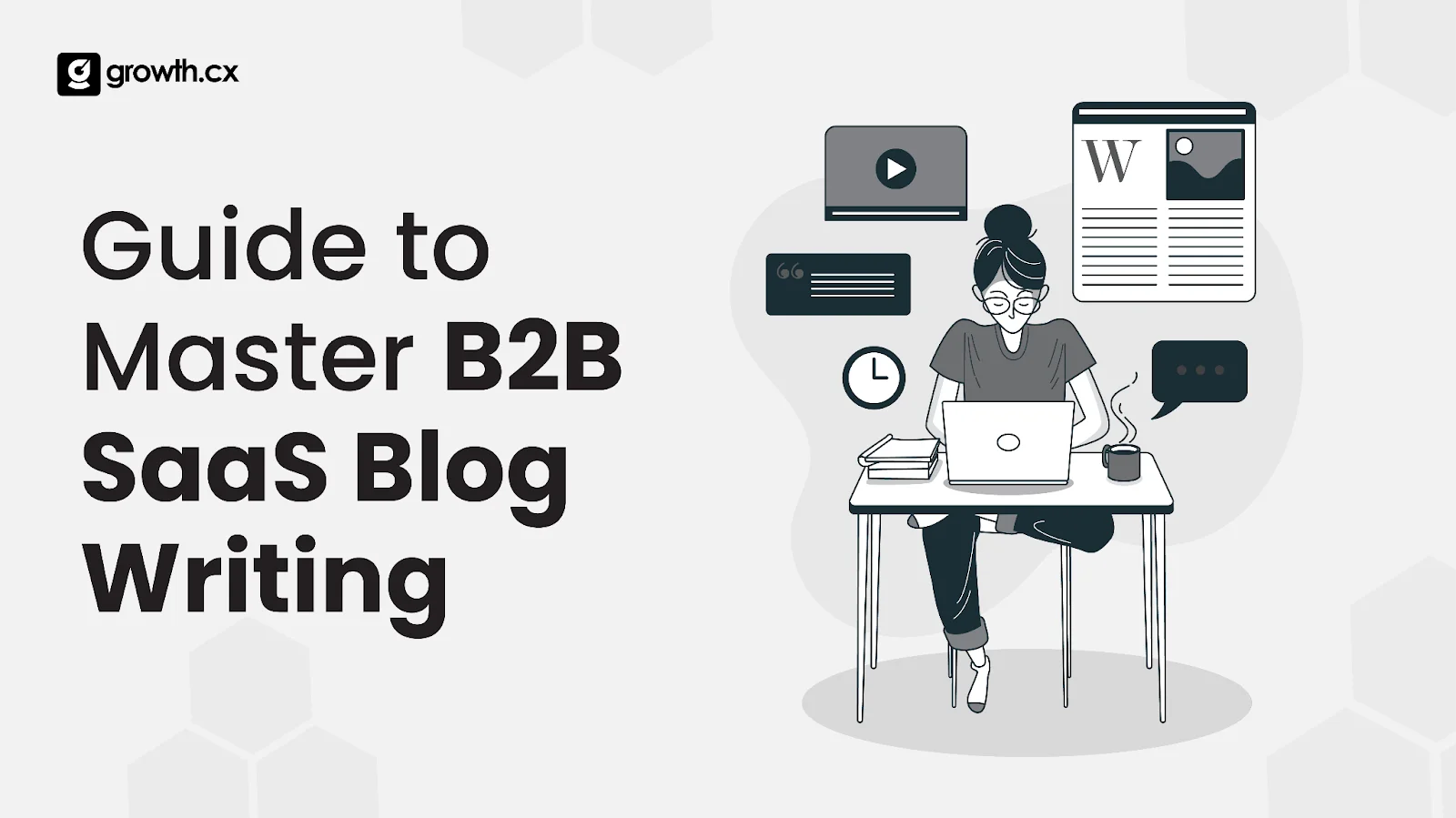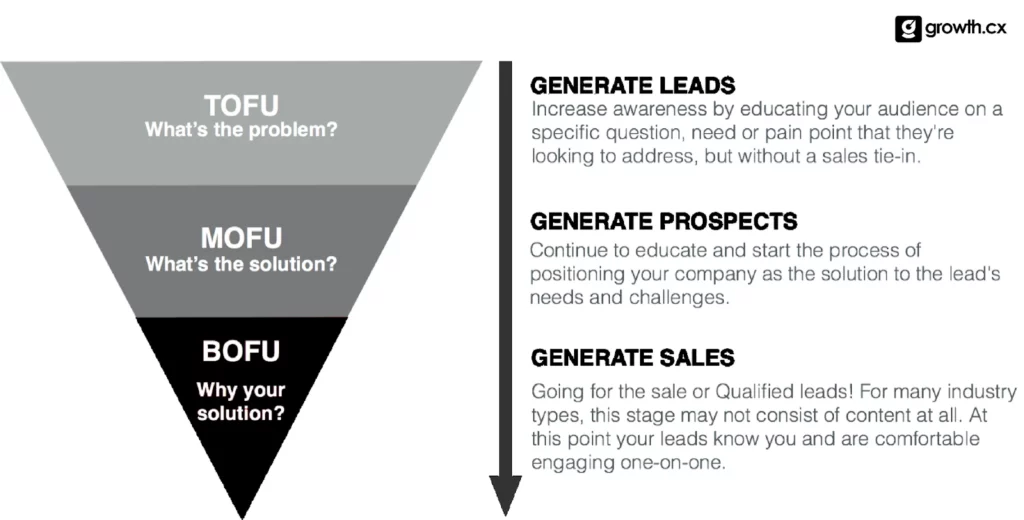As a B2B SaaS company, you know the importance of content marketing. After all, it is the best way to position your product in the market and connect with your audience. But if you don’t know how to get started, then here is the best guide for you!
While writing blogs for SaaS products, remember that this niche requires a different writing style and structure than other industries. Your content should be product-focused and address potential customer’s pain points. It should be engaging and easily understandable with a crisp tone.
Now, let’s delve deeper to learn the critical aspects of writing a power-packed SaaS blog!
Things to consider before starting
Before you start with the actual writing, here are a few things you should work on!
1. Learn the product
The first task before you is to learn everything about the product you intend to market through your blogs. Talk to the product engineers to know its features and functions. Use cases and the problems it aims to solve. This helps you present the product in a better way and connect organically with the use cases and pain points in your writing.
2. Understand ICP (Ideal Customer Profile) & Buyer Persona
In the case of B2B SaaS, ICP and Buyer Persona describe a series of information as stated below:
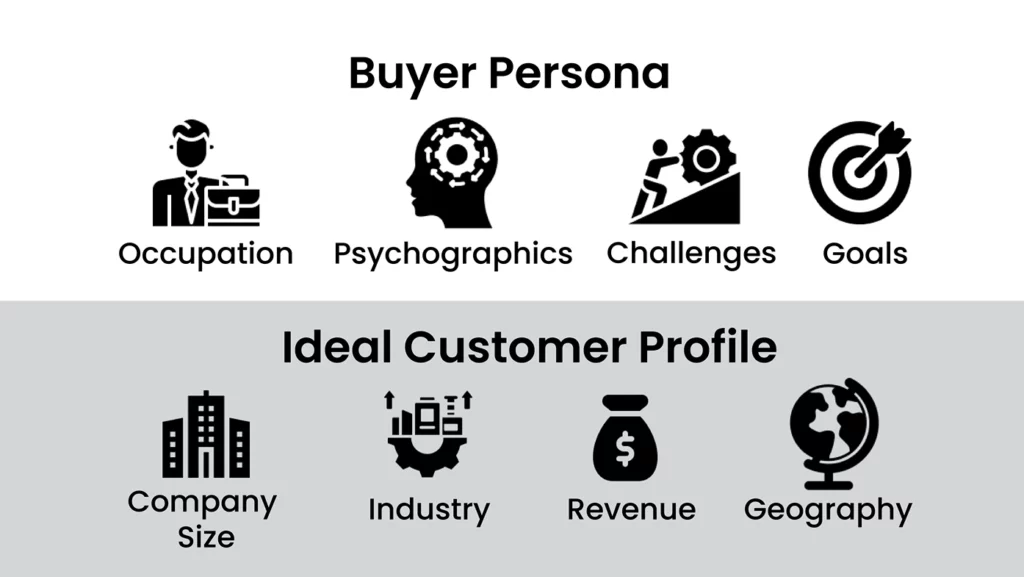
So, an important homework before you write a SaaS blog is to understand the Ideal Customer Profile and buyer persona, and how you can target them into becoming potential clients or retain them through your blog post.
3. Analyze the queries, pain points, and solutions the buyer persona is searching for
Once you have created the ICP and buyer persona, you can now analyze its queries regarding your SaaS product, its pain points that you aim to solve with your product, and how your product can be a solution to those problems.
Once you get this clear, you will know how to connect with your audience and educate them about your product and how it can simplify their problems.
4. Do competitor analysis
The SaaS industry is competitive and growth-oriented. An insight into your competitor’s business is greatly going to help you. You can utilize SEO tools to conduct competitor analysis.
- Competitor websites, webinars, whitepapers, longer guides, etc.
- Landing pages that are working for them
- Study the content they are publishing on their site
- See which keywords are helping them increase conversions
- Learn the solutions they are providing
- See what customers are looking for within your industry.
5. Market research
Opt for conducting market research that will help you understand your audience well. Go through blogs of competitor websites and see the most viewed blogs. You can compile a list of similar topics to give readers extra value.
You can also check sites like Reddit and G2 to know about trending topics, popular keywords, ideas, etc. This step will help you curate a list of topics for your blog.
6. Finalize your keyword list
The competitor analysis and market research phases help you pick up the important keywords for your blogs. Some of the best keyword research tools are:
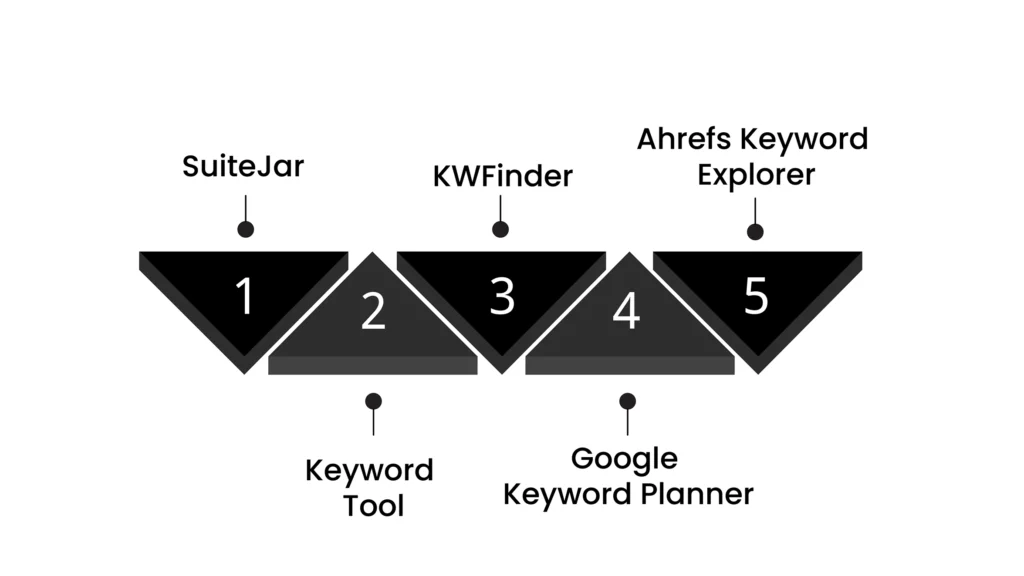
Create a list of both long and short-tail keywords relevant to the topics that you have selected.
Your target keywords must meet these requirements:
- User Intent: Select keywords that align perfectly with the specific needs of your target audience.
- High search volume & Low difficulty: Focus on keywords that not only have a high search volume but also low competition.
- Higher conversion rates: Prioritize keywords that not only promise higher conversion rates but also are highly relevant to your specific content and business goals.
- Individual keyword relevancy: Choose directly and specifically relevant keywords to your content, ensuring they closely align with your product or service offerings.
7. Create topics/headlines based on the shortlisted keywords
With the shortlisted keywords, you can now easily prepare a list of headlines that you can write blog posts on. Make sure you write on topics that your audience cares about. Know why you are writing the blog and for whom.
The headline should aim at making the audience realize which problem it is addressing. Remember, customers are not interested in knowing the fancy features of your SaaS product. They only care about how your product is going to solve their problem and why they should choose your product over others.
8. Segment topics in three categories: TOFU, MOFU, BOFU
TOFU (top of the funnel), MOFU ( middle of the funnel), and BOFU (bottom of the funnel) are the 3 stages of the marketing funnel. Each stage is specific to a particular buyer persona. This means you must understand your buyer and their problems before you custom-create your content for each of these stages.
TOFU refers to the awareness stage comprising the wide general audience. You need to focus on making them aware of your product. Use the right keywords and topics to make this audience find you. TOFU content is meant to be educational and should not have even the slightest hint of a sales pitch. Some of the best kinds of TOFU content are:
- Social media posts
- Infographics
- Blogs
- Video
- Quiz
- whitepaper/ ebook
MOFU is the stage where you have a narrowed-down section of interested leads that need to be converted to clients. These people are researching various options, and it is at this point in time that you need to not only educate them about your product but also let them know why they should choose your product over others. Some MOFU content ideas are:
- Blogs
- Case studies
- Webinar
- Email drip
- How-to content
- Guides
- Comparisons
BOFU is the most favorable stage. You now have a concrete section of successfully qualified leads who are ready to purchase your product. BOFU content should perfectly showcase your product, its features, benefits, and other aspects. Some of the best ideas for BOFU content are:
- Product comparisons
- Product demos
- Free trial
- Case studies
- Testimonials
How To Write A Blog?
Blogging is the cornerstone of SaaS marketing. A B2B company website must have a blog section so that your customers can find you and learn about your product and services. Blogs are now the primary way to connect with your audience and build trust. Here are a few guidelines highlighting the core aspects of a well-researched blog!
1. Pick the first topic
With the list of topics that you have compiled already, begin your first blog by choosing the first topic. Create a compelling title for the same. Then start researching from different sources so that you will be able to draft an informative blog post. Opt for a topic that connects with the audience and engages them, ultimately converting them to customers.
2. Pick up the keyword cluster (focus keyword, secondary keywords, LSI keywords)
By now, you have the list of all the keywords you will be targeting. Pick up a keyword cluster from the list to incorporate into your blog. The keyword cluster must include:
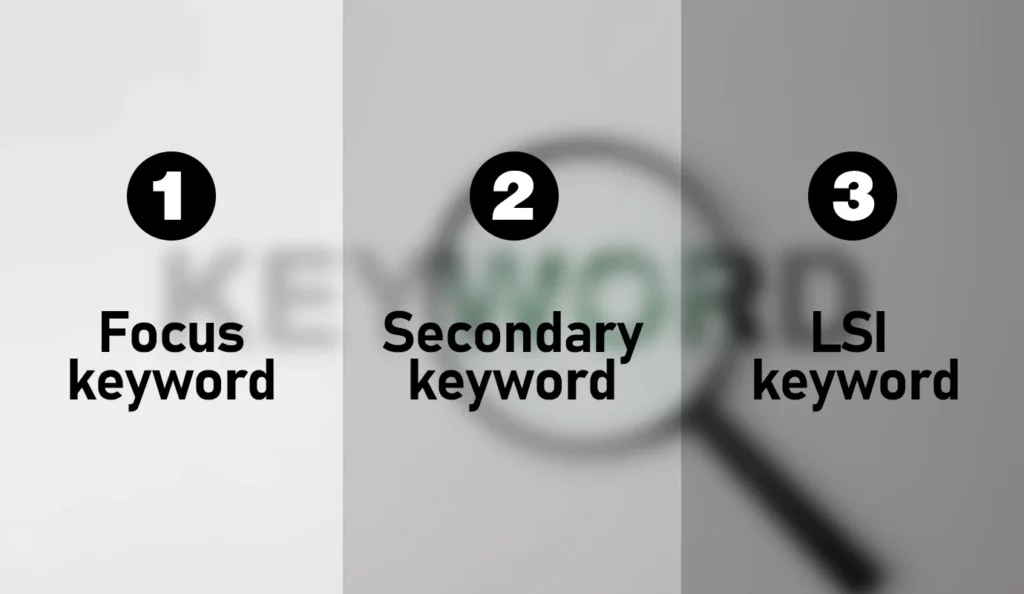
For example, if you are writing about Hair Care, your keyword cluster must include what hair care is, what does my hair look frizzy, hair care products, hair oil, frizzy hair, hair care routine, dandruff hair etc.
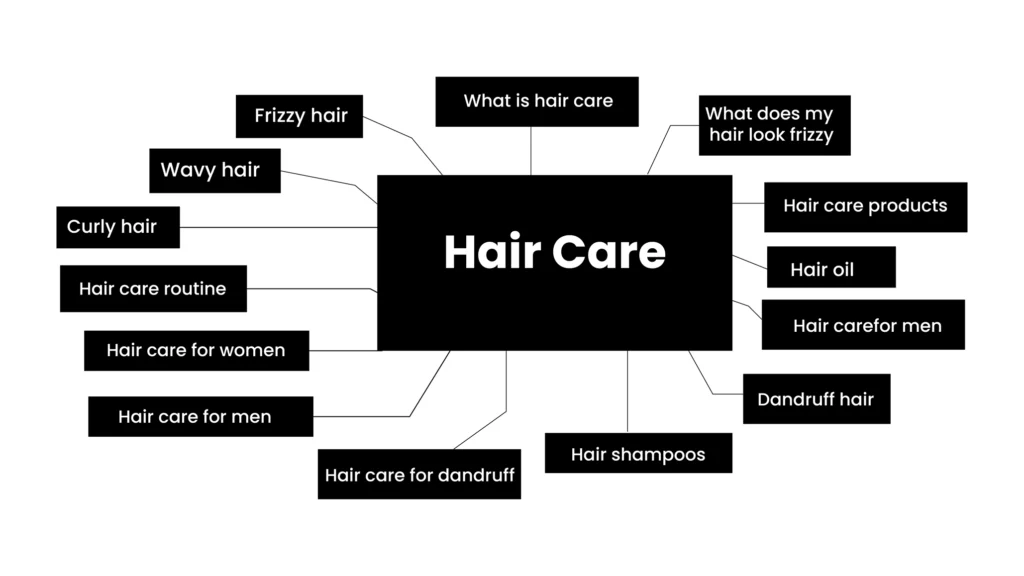
Follow this strategy to create a powerful keyword cluster:
- Make a keyword list using keyword-creating tools
- Segment your keyword into groups on the basis of the search intent behind each keyword
- When you have multiple keyword clusters, you can organize topic clusters
The best tools for keyword clustering are:
- Cluster AI
- WriterZen Keyword Explorer
- Surfer SEO Content Planner
- Serpstat
- SE Rankin Keyword Grouper
3. Pick up the queries
Your blog must focus on clearing all doubts of the potential customer. Include sections such as FAQs, People also ask, user queries, etc, where you can directly answer client queries.
You can use the Google autocomplete feature to generate predictions automatically as you type queries into Google’s search box. It displays a list of commonly searched terms related to your query.
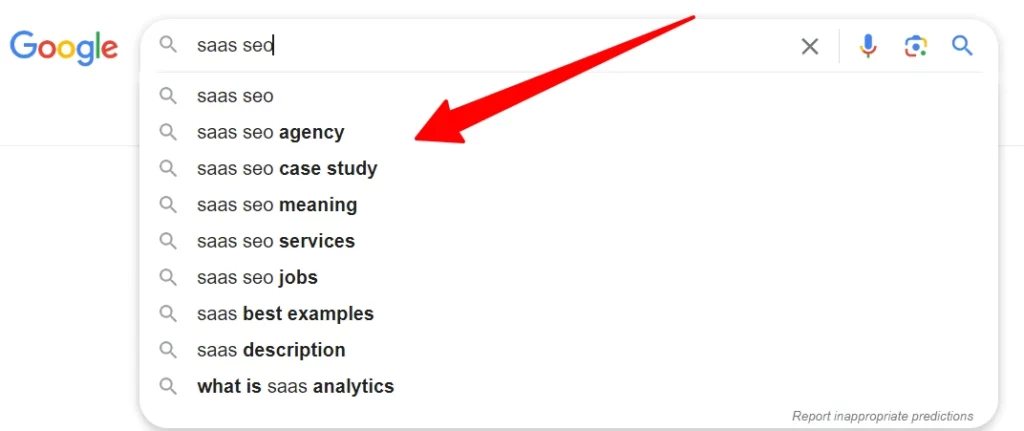
And you can get query suggestions with the ‘People Also Ask’ section.
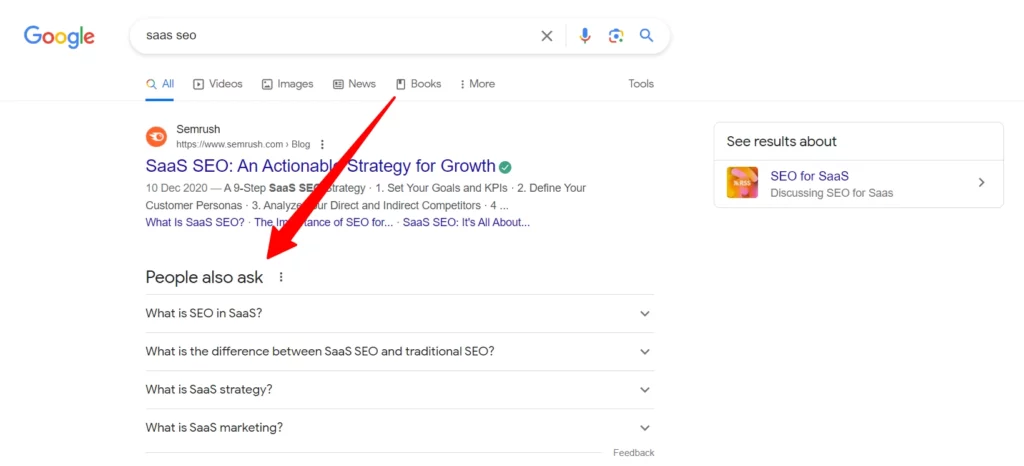
And you can study competitor sites and see what the audience is keen to know about. You can also browse Google and Quora to know about customer queries regarding your product.
4. Search for focus keywords in Google, analyze the blogs in the search results
Once you have decided on your focus keyword, search for blogs with the same focus keyword in Google. Analyze the first five blogs in the search results, check their internal SEO strategy, their style of blog presentation, etc. This helps you know how you can write a different yet relevant blog that will be valuable to your audience.
5. Give it a try in chat gpt as well to see how it goes
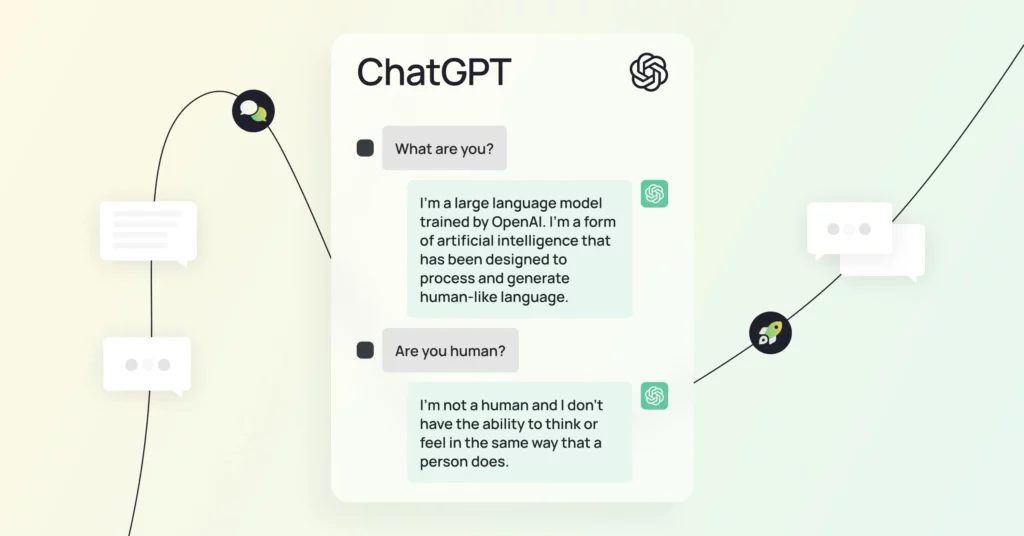
ChatGPT is the current buzz and has become a good source for writing impactful blogs. You can get some help from this premium AI tool to get a blog drafted. While I don’t suggest blindly copy-pasting an AI-generated blog, the draft created by ChatGPT can be a vital source of information for the relevant topic. Here’s how you can go about it!
- Select a prompt – A prompt is a question or brief that you provide to chatGPT to get started, for example, “6 ways to market your SaaS product.”
- Customize your content parameters – You can customize the response length and other parameters to get the exact type of text you want.
- Review – Review the AI-generated text, as it is better to give it the necessary revisions and edits. Check for spelling and grammar errors. Never blindly copy-paste AI-generated content.
- Add your own opinion and style – Lace the content with your personal touch and lend it your style of writing. Add opinions, insights, and anything that you think will spruce up the content quality and value.
- Publish – Finish off by publishing the final content.
Also Read: How To Use ChatGPT For Your SEO & Content Strategy
6. Create the content structure
Now, that you are done with all the research work, you should begin with the drafting of your blog. Create a blog outline based on the keyword cluster. Jot down the various sub-sections of the blog, including FAQ, User Queries, People Also Ask, etc.
Make sure you cover all the vital information you have garnered from the top 5 Google-ranked articles and the draft created by ChatGPT.
Here are a few things to keep in mind while creating the content structure:
- Define your content goal – Define your reason for writing the blog as it gives you a fixed perceptive to write. Whether you want conversions or click-throughs or create brand awareness, know your motive before you begin writing.
- Choose a keyword cluster that supports your content goal – Choose the best keyword cluster that will help achieve your content goal.
- Write down the headlines and subsections – Structure your content by writing the headlines and subheadings that you want to include in your content. Try including keywords in the subheadings.
- Look at your competitors- See the blogs of competitors to know what they are talking about. Try including those ideas and adding more to it to give value to your readers.
7. Create content
Sprinkle your content with the keywords that you have shortlisted for your blog. Use 2 to 3 internal backlinks to keep readers hooked to your website. Make sure both keywords and backlinks are used organically so that they don’t seem stuffed.
Here are some ways in which you can research information for your blog:
- Look at popular blogs on the same topic
- Consult with your colleagues and people related to the product you are writing about
- Use stats from trustworthy sources
- Interview reputed people from the industry to get their opinions to improve your content.
8. Check the blog for correct keyword usage
Once you are done writing your blog, go through it to ensure that all keywords that you had selected from the cluster to include in the blog are used properly. Also, check for the keyword density. Though there is no hard and fast rule if you want to reap the benefits of SEO, then opt for using one to two keywords every 100 words. The keyword density should be 1 to 2% of the content length.
9. Audit the blog for adding an internal link
Check your blog to see that you have used the correct anchor text for internally linking the blog to another blog on the same website. The anchor text should be hyperlinked to a relevant blog to ensure that your viewer stays on your website for a longer time.
10. Scope for images/creatives
Back your blog with the right images and statistics so that it makes for an engaging and highly informative read. The different kinds of blog images that you can include in your content are:
- Stock photos – These are usually the first choice for bloggers. Stock photos are mostly free.
- Screenshots – These are best for educational content, such as instructions and how-to guides. Tools like Lightshot and Clipular help you to take and edit screenshots for your blog.
- Infographics – Infographics help generate shares and backlinks while explaining complex data in a simple manner.
- Hand-drawn pictures – Such images help you to add your personal touch while enhancing brand recognition. You can use tools like Canva, Photoshop, Krita, etc for this purpose.
- Graphs and charts – Bring more clarity to your content info by using graphs and charts. They make readers understand data quickly.
- Presentation – Slides and presentations work well as visual content for your blog. You can use tools such as PowerPoint, Visme, and Keynote for this.
11. Proofread the blog with tools for grammar check
Next, go ahead and proofread your blog manually as well as with tools such as Grammarly and Copyscape. Make sure there are neither grammar mistakes nor unintentional plagiarism.
12. Make sure it has a good readability score with the Hemingway app
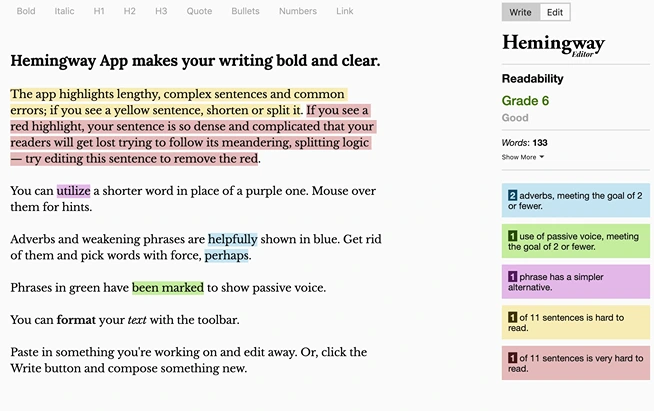
Your blog must have a good reading score to get top rankings in search engines. Check the readability score on the Hemingway app. An above 90 readability score makes for a top-quality blog.
The Hemingway app can further help you to:
- Streamline your writing style by highlighting areas of weak writing
- Rectify grammar errors and misspellings
- Identify errors such as overuse of adverbs, passive voice, confusing and complex sentences
- Helps in proper formatting of content
13. Put the images, alt text, and caption for images.
Once you have added all the relevant images to your blog, you need to add a proper caption and alt text for each of the images. These ensure that your images are easily accessible to viewers and search engines.
The caption and alt text must contain the keywords from the keyword cluster for easy access through search engines.
14. URL, Meta Title, and Description

Next, create a URL that is easy to read and contains the primary keyword of the blog. This will aid in making it easily accessible to the audience on Google.
Opt for creating a catchy meta title for the blog. This should also contain the primary keyword from the keyword cluster used in your content.
Write a short description of your blog that would be displayed under the title in Google search results. The meta description should also contain the focus keyword and should be within 160 characters. It should be crisp enough to hook the audience to click on the link and read your blog.
15. Audit the entire blog once again
Next, give a final read to your entire blog. Check for any mistakes and brush through all the links, images, URLs, meta titles, and meta descriptions once again.
16. Publish
Finish off by clicking the Publish button. You have successfully completed your blog.
Conclusion
Content writing is one of the best tools for SaaS companies. There’s no denying that crafting B2B SaaS blog articles is a task that demands expertise and experience. It plays a role in yielding desired outcomes. To create blogs, one must master the art of SaaS writing.
Collaborating with a growth marketing agency for SaaS content writing can help you achieve your blogging goals. Ultimately the goal is to attract traffic or generate buzz while ensuring potential customers make decisions based on thoughtful analysis and data-driven insights.
Having a grasp of B2B SaaS blog writing principles will enable you to position your business for sustainable success now and in the future. Your SaaS company will undoubtedly attract many leads once you start producing top-notch blogs with results.

FAQ
What are the best B2B blogging practices?
Target content for B2B audience, establish thought leadership, share case studies, optimize for SEO, integrate email marketing, collaborate with influencers, and engage on social media.
What are the steps in a B2B blog strategy?
Define goals, identify the target audience, conduct keyword research, create a content calendar, plan promotion, use analytics for monitoring, and iterate/optimize regularly.
